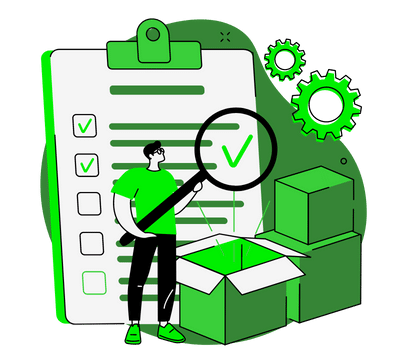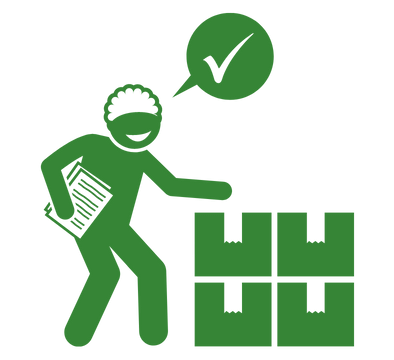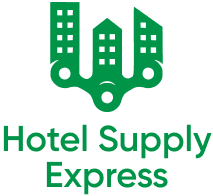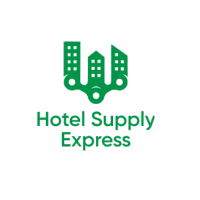Hotel Supply Express Quality Assurance
The hospitality industry thrives on reputation, and a crucial aspect of building a favorable reputation lies in providing consistent and exceptional guest experiences. The quality of hotel supplies plays a pivotal role in shaping these experiences. Guests expect clean, comfortable, and aesthetically pleasing accommodations, and the supplies within hotel rooms and common areas significantly influence these impressions.

Stringent Supplier Selection
Hotel Supply Express recognizes that the foundation of quality lies in selecting reliable suppliers. They collaborate with a network of established manufacturers with a proven track record of producing high-quality goods. These manufacturers are vetted for their adherence to industry standards and ethical practices.
Product Specifications
Clear and comprehensive product specifications are the cornerstone of ensuring quality consistency. Hotel Supply Express works closely with manufacturers to define precise requirements for each product, leaving no room for ambiguity. This includes details on materials, dimensions, finishes, and performance standards.
Quality Testing and Inspections
Before any product reaches a hotel's doorstep, it undergoes rigorous testing and inspection processes. Hotel Supply Express employs a team of quality control experts who conduct thorough assessments, ensuring that every item meets the predefined specifications. This proactive approach mitigates the risk of subpar products entering the supply chain.
Sample Reviews
Hotel Supply Express often requests samples from manufacturers before finalizing bulk orders. These samples undergo meticulous evaluation to verify their adherence to quality standards. This step enables early detection of any potential issues and allows for necessary adjustments before production begins.
Certifications and Compliance
To guarantee that the products meet industry regulations and safety standards, Hotel Supply Express insists on procuring items that have the necessary certifications. This commitment to compliance ensures not only the quality of the supplies but also the safety and well-being of the guests.
Continuous Feedback Loop
The pursuit of quality is an ongoing endeavor. Hotel Supply Express maintains open lines of communication with both manufacturers and clients. Any feedback received from hotels regarding the quality of supplied goods is promptly addressed, leading to iterative improvements and refining the quality control process further.
Understanding Quality Assurance
Quality assurance (QA) and quality control (QC) are often confused, but they have distinct roles in quality management. Both are vital for ensuring product excellence. QA encompasses the entire quality system, while QC is a subset of QA. QA covers a wide range of responsibilities, while QC focuses specifically on testing and inspecting products. Some quality system elements might involve QA and QC indirectly. Recognizing these differences is crucial for effective quality management and maintaining product standards.

QA, QC, and Inspection
Inspection is the process of measuring, examining, and testing to gauge one or more characteristics of a product or service and the comparison of these with specified requirements to determine conformity. Products, processes, and various other results can be inspected to make sure that the object coming off a production line, or the service being provided, is correct and meets specifications.
Quality Assurance
Quality assurance can be defined as "part of quality management focused on providing confidence that quality requirements will be fulfilled." The confidence provided by quality assurance is twofold—internally to management and externally to customers, government agencies, regulators, certifiers, and third parties. An alternate definition is "all the planned and systematic activities implemented within the quality system that can be demonstrated to provide confidence that a product or service will fulfill requirements for quality."
Quality Control
Quality control can be defined as "part of quality management focused on fulfilling quality requirements." While quality assurance relates to how a process is performed or how a product is made, quality control is more the inspection aspect of quality management. An alternate definition is "the operational techniques and activities used to fulfill requirements for quality." For some service organizations, the concept of quality control may be foreign because there is no tangible product to inspect and control. The quality assurance function in a service organization may not include quality control of the service but may include quality control of any products involved in providing the service. A service may include products that are documents (such as a report, contract, or design) or tangible products (such as a rental car or units of blood). It may be necessary to control product quality in a service organization to ensure that the service meets customer requirements.
Quality Assurance and Audit Functions
Auditing is part of the quality assurance function. It is important to ensure quality because it is used to compare actual conditions with requirements and to report those results to management. Auditing and inspection are not interchangeable: “The auditor may use inspection techniques as an evaluation tool, but the audit should not be involved in carrying out any verification activities leading to the actual acceptance or rejection of a product or service. An audit should be involved with the evaluation of the process and controls covering the production and verification activities.” Formal management systems have evolved to direct and control organizations. There are quality management systems (QMSs) as well as environmental or other management systems, and each of these systems may be audited.
Quality Assurance Audit
The primary objective of a Quality Assurance Audit is to gather information related to the on-going status of a process and then applying the information gathered to evaluate the performance of the process against defined criteria. When performing an audit you are reviewing the activities, the records, processes, systems, user experiences, competences, etc., in place and seeing how they compare to expected standards of performance, customer expectations, design expectations, etc..

Quality Assurance Auditing – Definition
A quality assurance audit is a documented, systematic process, performed in a planned manner by competent independent personnel with the objective of evaluating the application by an organization to the principles and requirements of defined quality regulations and customer expectations
Key objectives within the Quality Assurance Auditing process
Benchmarking Procss
An audit is a ”benchmarking process”, i.e. an audit will give a status of the current performance of a process. This status can be measured against a published standard, or versus an approved operating procedure, versus a peer department, versus competitor companies, etc..
Driving Improvement
An audit should be utilized as a method for driving improvement. The audit may identify shortcomings in process performance, may identify changing trends in performance, may identify deficiencies in staff knowledge or competence. Any such findings can then become the basis for improvement activities.
Regulatory and standard compliance
Regulatory and standard compliance. The audit will confirm the compliance status of a process or product versus applicable regulatory or standard requirements. The audit can expose any gaps against requirements, which can then be addressed.
Quality Assurance
The quality assurance audit is frequently applied back through the supply chain, where purchasing organizations utilize audits to force minimum quality standards on suppliers. Frequently a supplier cannot become “approved to supply” a product or service, without first having passed the audit and addressed any shortcomings in their quality management system.
Learning and Training
Learning and Training. A key point to understand as part of the audit program, is the potential for learning and knowledge transfer during the audit process. Where the auditor has a good understanding of the product or process, he / she can use the audit as a form of training for the person being audited. By explaining the reasons for particular requirements, or test points, or record requirements, the person being audited can personally develop their process or product knowledge.
Quality Audit
The quality audit should be a means of standardization. By implementing an audit program, equivalent standards of performance can be developed across different functions. The knowledge gained can be applied to ensure procedures are consistently utilized or equivalent competence requirements are set for staff. In the wider community, regulatory bodies for example use the quality assurance audit, to ensure quality standards are consistent across different product manufacturers.
Internal audits are usually performed by the internal quality assurance function within an organization and cover any functions or activities which may impact product quality. The internal audit program of an organization frequently includes the supplier audit program.
External audits are normally seen as audits imposed on an organization. These may come from regulatory bodies or from bodies which have the authority to issue certifications, e.g. ISO 9001, ISO 14001, ISO 13484, etc.. For a business which provides products and services into another commercial business, then the purchasing organization may impose minimum standards of performance on the supplier, which is confirmed via a supplier audit program.
Audits are normally planned in advance, many organizations complete detailed annual audit schedules. Good practice is to have a less detailed audit program looking forward say three years, which helps in the planning of audit resources and can demonstrate alignment of the audit function with the business strategy.
Audits will normally be planned based on criticality. This criticality is related to the potential risks identified. Best practice is to have a risk management process in place which identifies the various risks to an organization, these may be safety, quality, reliability, financial, reputational, etc.. Audits are then planned in accordance with the risk levels identified. The greater the risk, then the more frequent and more detailed the level of audit performed.
At the end of the audit, it is normal practice for the auditors and key auditees, to review the audit findings and agree on the next steps. The objective should be to aim for agreement, even where deficiencies are found. However, agreement may not always be possible and in such cases the auditors must clearly outline any concerns they have, the reasons for the concerns and their expectations in terms of actions to be taken to address.
A key part of any audit, is a clear report of findings. A report would normally contain details on the objective and scope of the audit, the dates the audit was performed, the names of all those who performed the audit, plus the names of any individuals who were audited. The standards, procedures, specifications applied or referenced during the audit. Details on the audit trail, i.e. what happened during the audit. Any observations, deviations from expected practice or recommendations, will be documented. There should be an audit summary and conclusions.
Upon completion of the audit, where deficiencies have been identified, corrective action(s) will be issued, or if already issued by the time the audit report is formally published, the report will reference the corrective action numbers. The corrective actions will then be tracked to closure via the CAPA (corrective and preventive action) process. Where critical deficiencies were identified, then a follow-up audit may be necessary.



